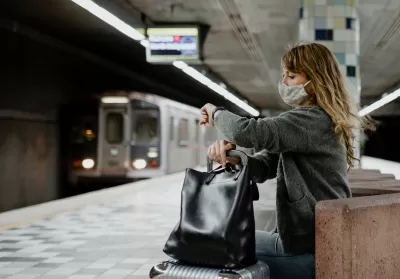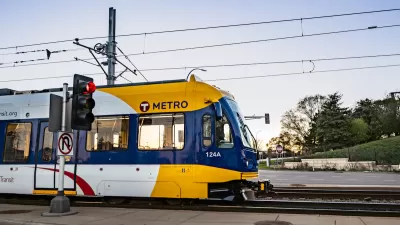Safety and harassment are commonly cited reasons passengers, particularly women and girls, avoid public transit.

“Street harassment is a common phenomenon that many public-transit riders, but especially women and girls, experience on buses and trains, in stations and at bus stops, as they travel between their homes, jobs, schools, events, and recreational activities.” Gabrielle Gurley notes this stark fact at the top of an article in The American Prospect.
In an effort to reduce harassment and make transit safer for women and girls, California legislators passed a law calling for a survey of transit riders’ experiences with harassment, and a second law requiring major transit agencies to collect passenger data on harassment.
In response to user surveys and data about harassment, San Francisco’s BART and Los Angeles Metro launched transit ambassador programs that staff transit stations with unarmed security personnel. “For its part, BART started running shorter trains. Fewer cars with more people on each car helps people feel safer. After this change, the agency has had fewer incidents involving police.”
The agencies are also including zero-tolerance language in their policies and conducting outreach about harassment and available resources, such as emergency call buttons that some passengers are unaware of.
According to the article, “LA Metro saw its highest ridership increases last year after its high-profile moves to offer information services and deploy more security officers, transit ambassadors, crisis intervention specialists, and workers to handle people suffering from drug abuse and homelessness. The agency also made numerous facility safety improvements, adding new lighting, additional call boxes, station music, and modified entrances.”
FULL STORY: California Public-Transit Agencies Confront Rider Harassment

Trump Administration Could Effectively End Housing Voucher Program
Federal officials are eyeing major cuts to the Section 8 program that helps millions of low-income households pay rent.

Planetizen Federal Action Tracker
A weekly monitor of how Trump’s orders and actions are impacting planners and planning in America.

Ken Jennings Launches Transit Web Series
The Jeopardy champ wants you to ride public transit.

How Project Connect Would Change ‘The Drag’
A popular — and sometimes deadly — Austin road will exchange car lanes for light rail.

Milwaukee Road to Get Complete Streets Upgrades
The city will reduce vehicle lanes and build a protected multi-use trail including bioswales and other water retention features on its ‘secret highway.’

Tackling Soil Contamination With Nature-Based Solutions
Los Angeles County residents and experts are turning to nature-based methods like bioremediation to address long-standing and fire-exacerbated soil contamination without resorting to costly and disruptive removal.
Urban Design for Planners 1: Software Tools
This six-course series explores essential urban design concepts using open source software and equips planners with the tools they need to participate fully in the urban design process.
Planning for Universal Design
Learn the tools for implementing Universal Design in planning regulations.
Ada County Highway District
Clanton & Associates, Inc.
Jessamine County Fiscal Court
Institute for Housing and Urban Development Studies (IHS)
City of Grandview
Harvard GSD Executive Education
Toledo-Lucas County Plan Commissions
Salt Lake City
NYU Wagner Graduate School of Public Service





























